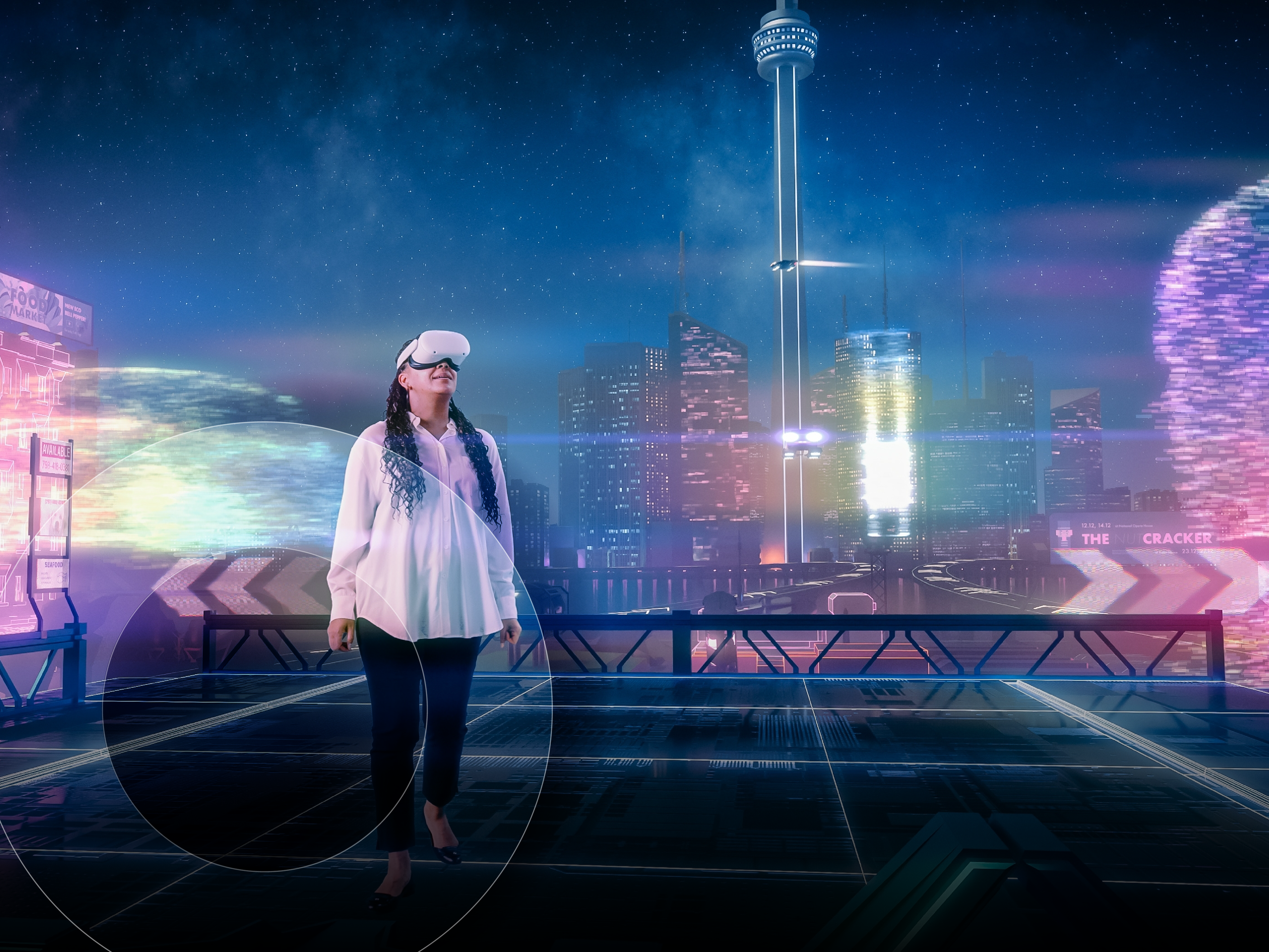Bridging the physical/digital divide with immersive technologies:
Can technology turn us into superhumans?

When we talk about emerging technologies, it’s easy to get carried away with the ‘what’ and forget about the ‘why.’ In this week’s Something for the Weekend post, we take inspiration from the current Paralympic Games.
The radio was on in the background last week, discussing Paralympic athletes, and I heard someone saying that these individuals should not be defined by their disabilities. First and foremost, they are athletes, and define themselves as such. They do what all athletes do – they train and push themselves to the limits of their abilities (and beyond). This resonated with ideas we’ve explored previously around disability, neurodiversity, and accessibility. But they do more than that. From wheelchair rugby (invented by the Canadians and originally called ‘Murderball’, with good reason) to running on carbon fiber blades – athletes and technology work seamlessly to achieve what their bodies alone can’t.
Physical augmentation
While I can’t fail to be inspired by people like Ibrahim Hamadatou, the Egyptian table tennis star who plays using his feet and mouth, it’s the human augmentation – the combination of man and machine that truly fascinates me. U.S. runner Blake Leeper was recorded running on blades at nearly 30mph on a treadmill in 2018, and although may be a while before humans can outrun cheetahs, developments in prosthetics have the potential to take their wearers beyond the capabilities of the human body alone.
Digital augmentation – entering the age of the cyborg
Just as binoculars or night vision goggles allow us to see more than is possible with our eyes alone, human augmentation has the potential to revolutionize life for disabled people. The most extreme example is probably Peter Scott-Morgan, who describes himself as ‘The Human Cyborg’. He’s a scientist and roboticist who has motor neurone disease and is using technology to continue to live and thrive despite being unable to speak, eat, or breathe without assistance.
But beyond this, we’re seeing increasing interest from businesses in the technologies that make up augmented reality (AR). From the visual technologies we’re probably all familiar with to haptics, sound, and smells to brain-controlled devices and avatars, there is growing potential for blurring between the physical and digital worlds. Human augmentation expert Helen Papagiannis talks about the need to design technology to allow for ‘human moments’, for the person to be visible rather than hidden behind the device.
Immersive technologies in practice
Immersive technologies have huge potential to improve workplace diversity, but that’s not all. The massive acceleration of digital transformation as a result of the pandemic means we’re all aware of the speed of technological change. IT leaders need to keep an eye on emerging technologies. Being able to identify the technologies that have valid use cases for your organization and adopt them quickly and efficiently provides a competitive edge.
While many people still think of immersive technologies as emerging, visual elements of augmented, virtual, and mixed reality are very much in use across a range of industries today, from architecture and mining to medicine. One recent SHI customer success includes this VR surgical training project. If you want to understand how these technologies could benefit your organization, why not sign up for one of our regular workshops on immersive technologies and Microsoft Hololens?
This long weekend, I want to leave you with three videos from 2012, 2016, and 2021 for inspiration. Describing Paralympic athletes as ‘Superhumans,’ they provide amazing insight into how disabilities need not hold people back.
Take inspiration from them to explore the immersive technologies that could help your organization merge the digital and physical so that your employees can become superhumans too.




